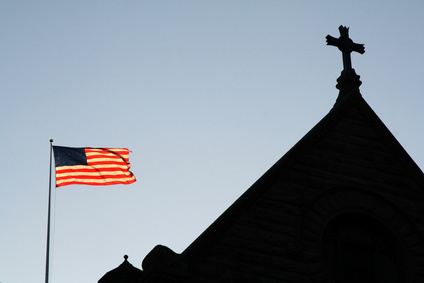The separation of church and state is a value enshrined in the American ethos, but how that works in real life is a source of controversy. Conservative generally want churches to have wide latitude and soverignty in their internal affairs while liberals generally like the government to steer clear of anything that even looks like a state preference for things religious. In debates about marriage equality and tax exemption for churches, every side cite the early history of our nation as the model and guide. But what if both sides are wrong about how the government and religion interacted when our republic was young?
Sarah Barringer Gordon, a law professor at the University of Pennsylvania, says that during the early decades of American life, state authorities interfered heavily in the affairs of churches. In the process, concepts such as lay accountability and leadership, democratic governance, individual conscience and tolerance were embedded into the fabric of American faith and values.
While the non-establishment clause prevented Congress from proclaiming any kind of pan-American religion, individual states moved more gradually to dislodge privileged sects; Massachussets, the last holdout, did so only in 1833. As they slowly ended the theocratic regimes which were typical of the Old World, the states looked for a new way to manage religious life, and most found a solution in the corporation: an arrangement under which churches could organise themselves, manage assets, limit their liabilities and ensure continuity. But as the professor stresses, early religious corporations were subject to very tight legal restrictions. They generally limited, to a few acres, the amount of land a church community could own, and to few thousand dollars, the annual income it could receive. Above all, it was mandated that lay trustees should hold and manage church property.
In important ways, the young republic forced religious bodies to become more lay-controlled, accountable and democratic, even if the religions in question (like Roman Catholicism) had a priestly, hierarchical tradition. The appointment of a Catholic priest was still the prerogative of a bishop, but the lay trustees of a parish could refuse to pay the salary of priest they did not like, as Ms Gordon noted in a recent podcast discussionorganised by the University of Pennsylvania Law School.
As was pointed out by her co-discussant Mark Silk, professor of “religion in public life” at Trinity College in Hartford, Connecticut, the early history of his own university exemplifies Ms Gordon’s main point: in early America, religious “autonomy” was subject to tough conditions which the state authorities did not hesitate to enforce. Trinity College was founded by Episcopalians, to the mild dismay of the Congregationalists who dominated Connecticut. They grudgingly allowed the college to have a specific denominational ethos, but insisted that it be open to students and professors of all religious hues.

